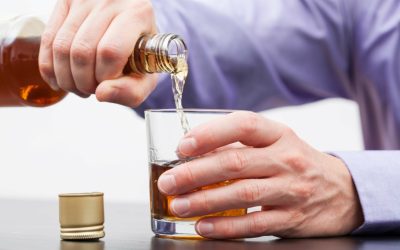Social settings, peer pressure, availability of the drug, and family dynamics all contribute to the development of addiction. According to Sassano-Higgins et al. (2016), in “A Review of Ketamine Abuse and Diversion,” the rising availability of ketamine, especially among young adults, has contributed to its increasing abuse. Because ketamine cream does not reach the bloodstream in high concentrations, it is less likely to trigger the reinforcing effects that contribute to psychological dependence. The way the drug Drug rehabilitation is administered and absorbed limits its interaction with the brain’s reward system, which is a key factor in addiction. Regular ketamine use may cause physical signs such as abdominal pain, high blood pressure, and urinary tract problems. Taking larger doses, especially among young people, can result in severe damage to internal organs.

When to seek Emergency Help
- Medical detox programs are available at both detox centers and recovery centers.
- Be aware of the risks.Until fairly recently, ketamine was classified as a Class C drug, with many professionals unaware of its dangers.
- It is important to approach the topic of ketamine addiction with empathy and understanding.
- While some users may find the k-hole experience pleasurable, it can also be terrifying and disorienting.
- Detoxification allows you to flush out ketamine and any other substances of abuse.
They may begin taking ketamine as a way of self-medicating or coping with their mental health condition. As they develop a tolerance to the drug, they may take larger and more frequent doses, which can lead to addiction. Luckily, several treatment options can help you or your loved one recover from ketamine addiction. If you or someone you know is addicted to ketamine, contact professional medical help.
Ketamine Withdrawal And Detox
Carolina Center for Recovery is lucky to have some of the most qualified and experienced addiction specialists in the country. No, there are currently no FDA-approved medications specifically for ketamine overdose. Treatment focuses on symptomatic relief and supportive care, such as oxygen therapy and intravenous fluids. Combining ketamine with opioids increases the risk of overdose and respiratory arrest. These interactions also weaken judgment, escalating the probability of accidents, risky behaviors, and the nascence of substance dependency.

Physical Effects of Ketamine Addiction
Originally developed as an anesthetic, ketamine is now used medically to treat conditions like depression and chronic pain. However, its powerful dissociative effects make it prone to misuse, leading to dependency. As tolerance builds, users require higher doses to achieve the same effects, which often results in addiction. Recognizing the symptoms of ketamine addiction is important for early intervention and treatment. Symptoms of ketamine addiction include intense cravings, memory loss, confusion, and withdrawal symptoms such as depression and anxiety when not using the drug. In severe cases, ketamine abuse leads to significant physical symptoms, including bladder dysfunction and urinary tract damage.
Slang Terms for Ketamine Side Effects

It causes a loss of both awareness and feelings and as such is used to induce sleep in patients undergoing surgery. It also has the ability to block the feeling of pain and thus is used to manage patients with chronic pain. The illicit use of ketamine as a recreational drug is due to its ability to produce a dreamlike or hallucinogenic state. Users often start by inhaling the drug in powdered form or mixing it with a drink. One study found that behavioral therapies, such as cognitive-behavioral therapy (CBT) and motivational interviewing, were effective in reducing ketamine use among individuals with addiction. Another study found that a combination of medication-assisted treatment and behavioral therapy was more https://vrct.in/2020/09/10/kundalini-meditation-for-addiction-effective-or/ effective than either approach alone.
Some people also experience withdrawal symptoms, such as confusion, agitation, or sweating when trying to reduce or stop using the drug. However, physical withdrawal symptoms from ketamine are milder compared to those from opioids or alcohol. In one study, 65.8% of patients who received ketamine for alcohol use disorder remained abstinent after a year, showing both its potential and the importance of carefully managing its use. Many individuals addicted to ketamine find outpatient treatment programs beneficial, as they offer structured support without requiring residential stays. Ketamine addiction does not typically ketamine addiction symptoms lead to physical dependence or severe withdrawal symptoms, making outpatient therapy sessions effective for addressing the psychological aspects of addiction. For the most part, the focus on mental health during ketamine withdrawal has taken precedence over the physical symptoms.
Troches might also influence addiction risk because they are typically used more frequently than other forms of ketamine, such as infusions. The ease of access and self-administration increases the potential for misuse, especially if patients begin to crave the drug’s mood-enhancing effects. While not as fast-acting as other methods, regular use of ketamine in any form still leads to psychological dependence. Morgan and Curran (2012) noted that about 28% of recreational ketamine users reported symptoms of dependence, highlighting the risk even when the drug is taken as prescribed.
